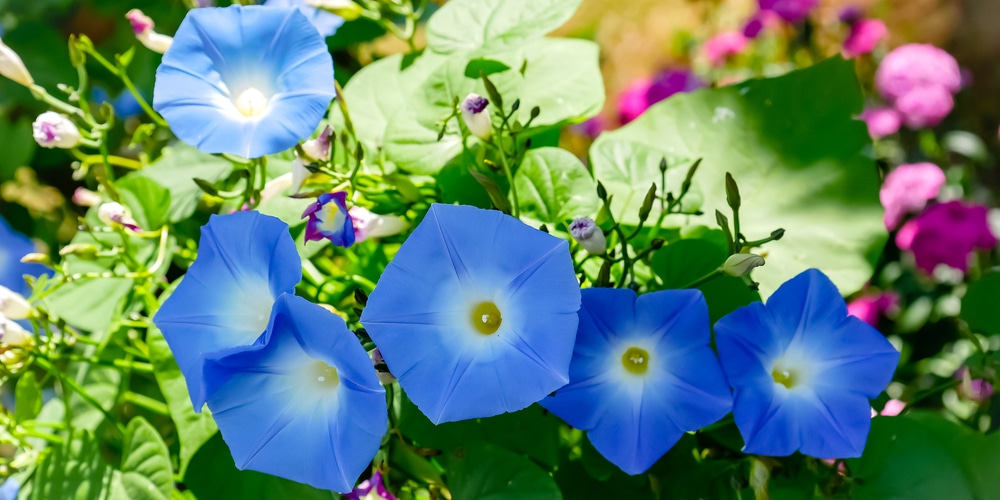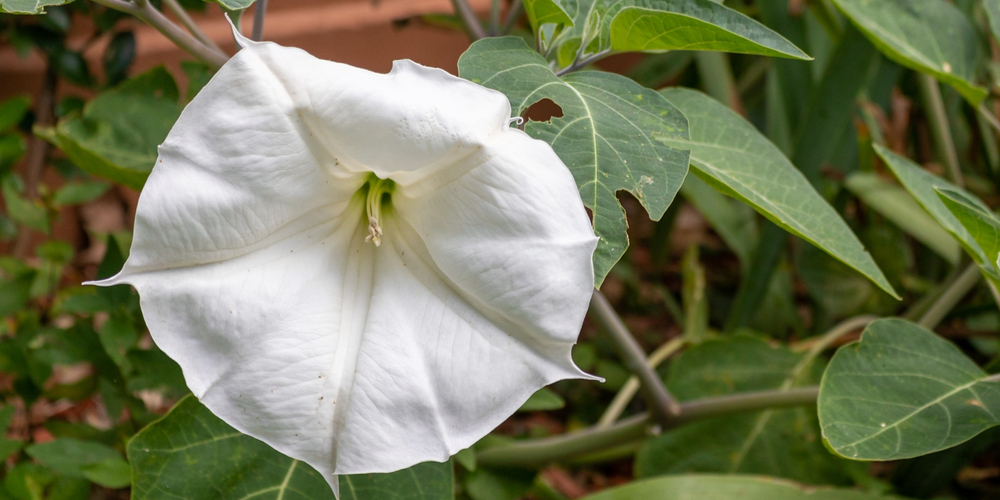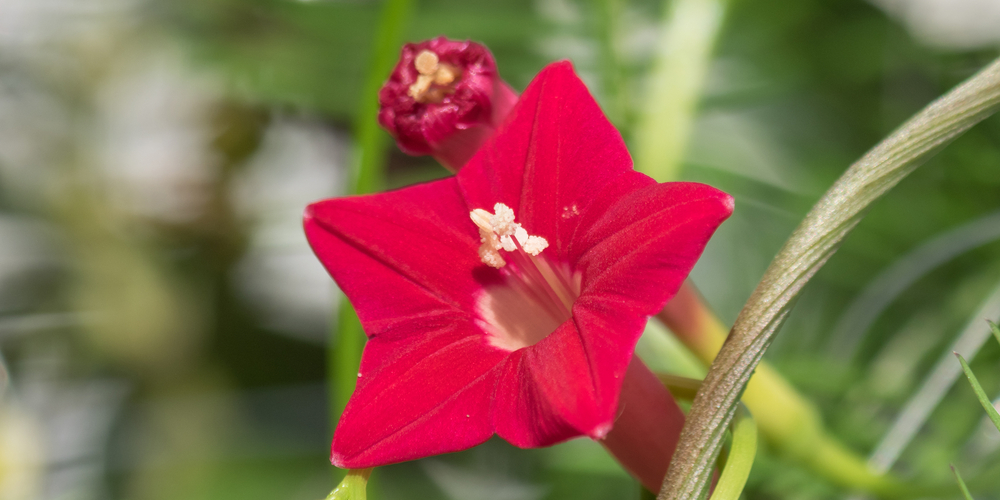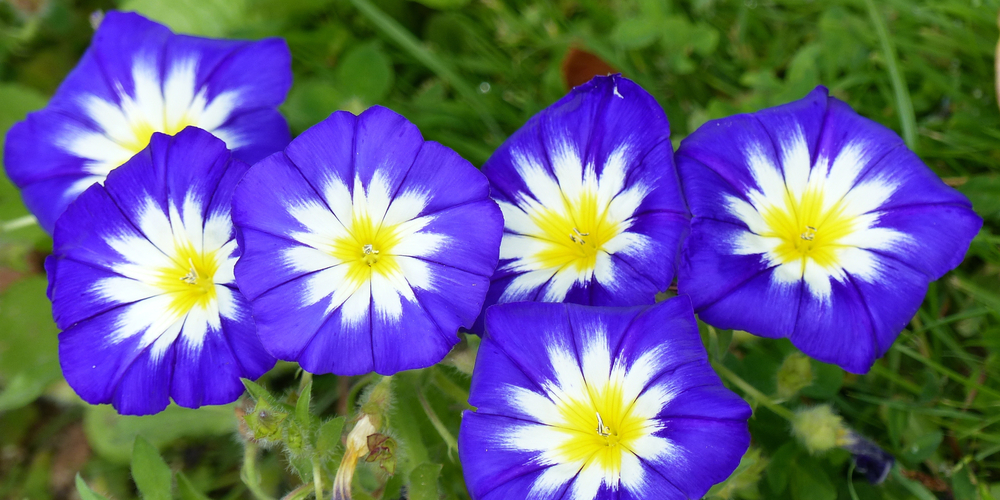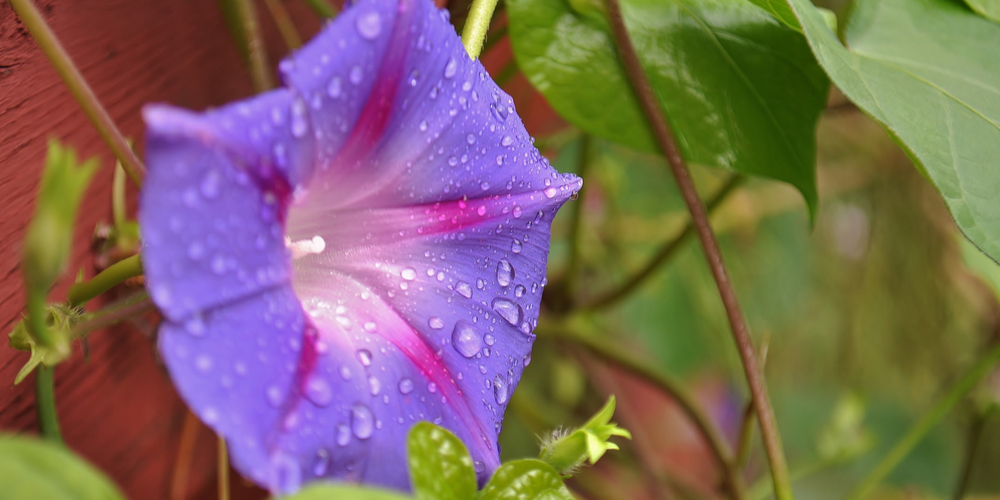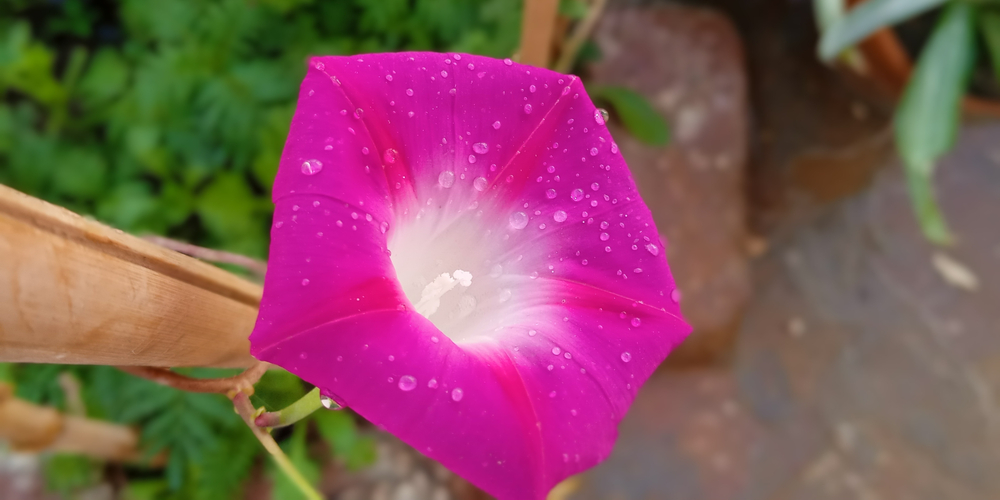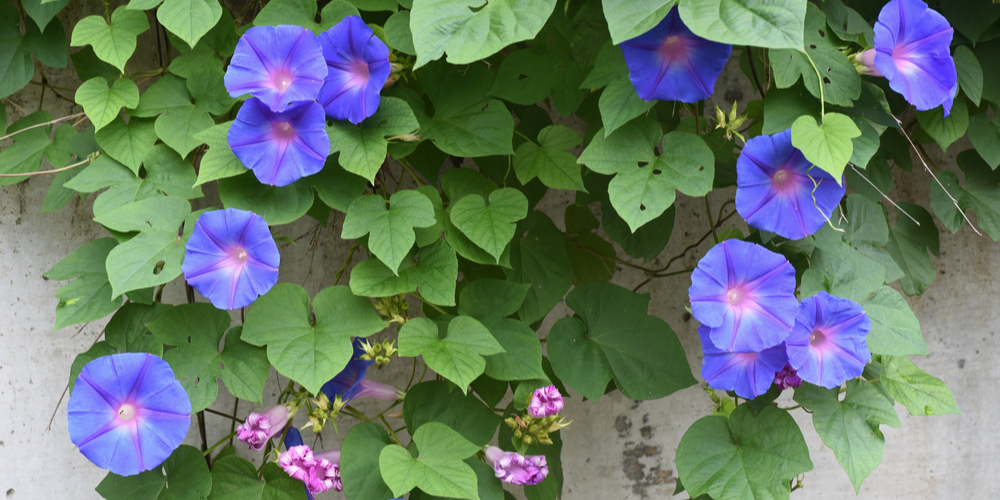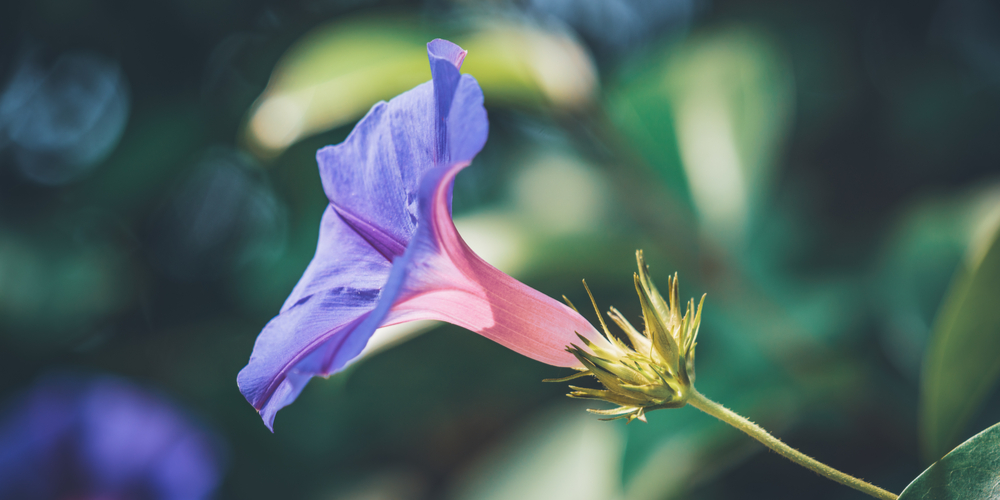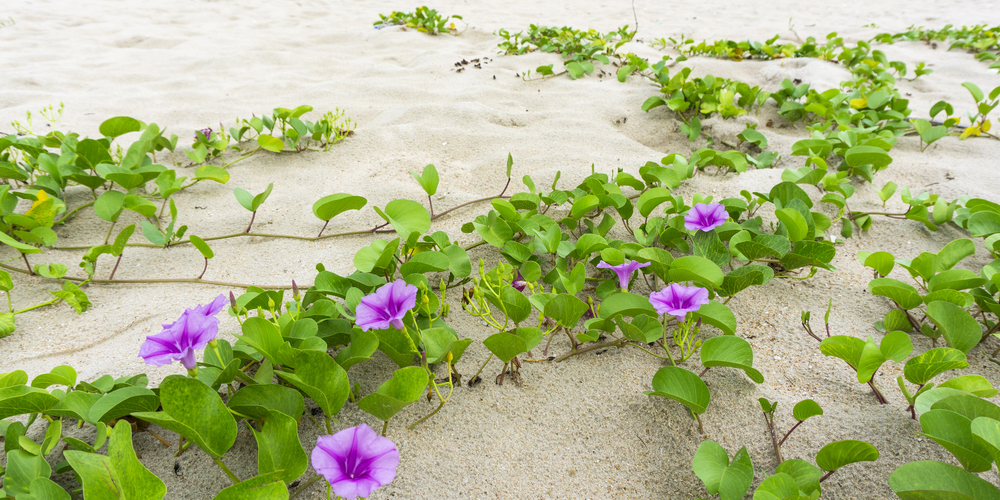Morning glories are excellent crowd-pleasers that bloom profusely from early summer through the first frost of fall. They get their name from their flowers’ short blooming time – the flowers open early in the morning and close up in the afternoon.
With their heart-shaped leaves and trumpet-like flowers, morning glories are relatively easy to identify, even for beginner gardeners. Many people love them not just because of their showy flowers but also because they are easy to grow. Here’s a list of Morning Glory types.
List of Morning Glory Types
If you are planning to add wonderment to your yard with morning glories, the good news is that there are many varied types of morning glories. This post will discuss some types of morning glory that are sure to make an impression on your garden.
1. Blue morning glory (Ipomoea Indica)
This is the most common type of morning glory. The plant has lush, velvet-like leaves and trumpet-like flowers that are about 3 – 4 inches wide.
Blue morning glory boasts bright blue flowers that usually fade into a pinkish purple hue as the day progresses. When planting this variety, it may be worth noting that its flowers attract hummingbirds and beautiful insects like butterflies. Blue morning glory will grow its best in full sun and well-drained soil.
2. Heavenly Blue (Ipomoea tricolor)
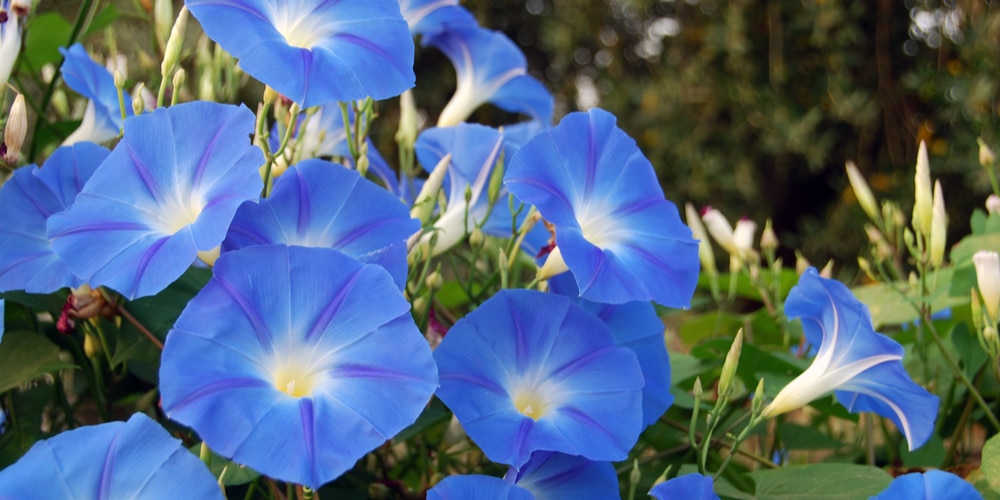
This is a beautiful annual vine with big, heart-shaped leaves that perfectly complement the azure blue petals. Their flowers are very adorable, with stunning white or yellow centers.
The plant can grow up to 7-10 feet tall, making for an ideal option for those who want to add pop to unattractive fences. Like their blue cousins, heavenly blue morning glories attract various pollinators.
Related article: Ipomoea tricolor morning glory
3. Moonflower (Ipomoea alba)
Moonflower is a unique type of morning glory that blooms during the night and closes in the morning. It is known for its attractive white flowers that produce a delightful scent. During the day, its buds appear compact and thick and will not open until dusk.
When the petals open, you will be able to see a pale-green star at the center.
Moonflower blooms from mid-summer through fall.
4. Cardinal Climber (Ipomoea quamoclit)
Growing up to 12 feet wide and 12 inches tall, Cardinal Climber is a true eye-catcher that blooms from summer to late fall, producing scarlet-colored flowers. This type of morning glory is commonly referred to as hummingbird vine because it attracts hummingbirds and other pollinators.
The red flowers will, in most cases, get around 1 inch wide. Although they can tolerate dry conditions, Cardinal Climbers will grow best with enough watering.
5. Ivy Morning Glory (Ipomoea Nil)
Ivy morning glory is unique with its delicate lavender flowers with yellow centers. This makes it easy to identify them.
As for planting, ivy morning glory does well in virtually all soil types but prefers full sun. No matter where they are grown, these flowers will attract a variety of pollinators.
6. Morning Star (Ipomoea purpurea)
This is a variety of morning glory flowers that exist in varied petal hues. The common colors are white, purple, pink, rose, blue, and violet.
Although Morning star flowers come in different colors, they are easy to identify, thanks to their usually white throats.
7. Scarlett O’Hara (Ipomoea nil)
This is a variety of morning glory that produces bright-red flowers with attractive white throats. When the flowers open, they are around 5 inches wide.
Like most of its cousins, Scarlett O’Hara blooms from summer through early fall. The vine has emerald-green, heart-like leaves and can grow very large, reaching 10 feet.
8. Morning Glory (Ipomoea purpurea)
Also known as the “tall morning glory”, this is a variety that gets relatively tall, reaching 10 feet high. It has beautiful, heart-shaped foliage, and its delicate purple-blue, trumpet-shaped flowers will open in the morning and close up as the day progresses. The flower may come in additional colors, including red, pink, blue, white, and magenta, all with whites cores.
Morning glory is deer-resistant but will attract pollinators to itself.
9. Flying Saucers (Ipomoea tricolor)
As the name suggests, these flowers have a saucer-like shape.
The twinning plant blooms early summer to fall, producing blue, white, and purple streaked flowers with yellow throats.
Like many other morning glory types, flying saucers attract pollinators like butterflies and bees.
10. Glacier Moon (Ipomoea tricolor)
Glacier moon flowers have pale ice blue petals that bloom during the day and close up around midday when the sun gets strong. The foliage can grow up to 8 feet tall.
11. Grandpa Ott (Ipomoea nil)
This is yet another beautiful variety of morning glory that produces beautiful, royal purple and trumpet-like flowers. From early summer to early fall, the flowers will open in the morning to show off their ruby-red, star-shaped core.
When natured properly, the vine can grow tall, reaching over 10 feet. This makes them a perfect option for people who want to add color to their walls or fences.
Notably, Grandpa Ott flowers are free of pests and disease.
12. Beach Morning Glory (Ipomoea Pes-caprae)
This variation can be spotted along beach edges, which definitely means that they can tolerate wind and salt. Instead of growing high, the plant makes a thicket around three feet wide and produces light- to medium-pink flowers with creamy-white core and dark pink lines.
13. Red Morning Glory (Ipomoea x sloteri)
This is more or less a variation of cardinal climber. The red morning glory showcases fiery-red flowers with white cores. When trained properly and grown in the desirable conditions, it can grow to around 10 feet tall.
It is a true eye-catcher and grows best in full sun. When they bloom, red morning glories attract pollinators.
14. Japanese morning glory
These flowers are native to Germany. They can grow up to 10 feet tall and will bloom into adorable, royal purple flowers.
List of Morning Glory Types: Conclusions
There are over 1,000 varieties of morning glory, and each species adds a unique pop to your garden. Most of them will produce trumpet-like flowers that bloom in the morning and close up as the day progresses. Hopefully, you will find this list helpful when searching for flowers to make your garden.
